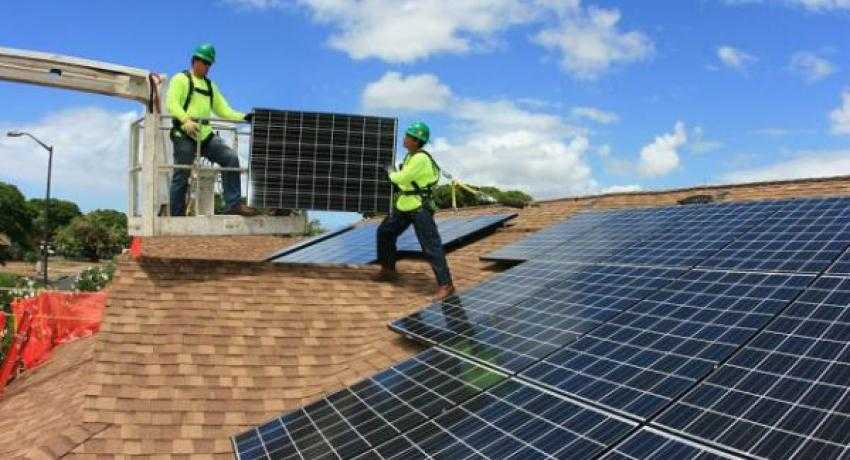SolarCity's loan program could expand solar market
SolarCity launched a new loan program this week that didn’t make big headlines, but that could be big news for the solar industry.
SolarCity and its counterparts Sungevity, Sunrun and Vivint Solar helped to make rooftop solar mainstream by developing the leasing model. Instead of ponying up cash for a rooftop solar installation or begging the bank to come up with a viable loan package, homeowners could have solar panels installed on their homes and pay the solar installer instead of the utility company for power.
That business model cracked open the middle class market for solar. Nearly 80 percent of California’s residential rooftop solar installations are third-party owned. Nationally, leased systems grew to account for 66 percent of all rooftop solar installation in 2013 from 40 percent in 2011, according to a report in the New York Times.
But only 23 states allow third-party systems and some of those still aren’t especially advantageous for the business model.
So, solar companies have gotten into the finance business. Companies like SunPower are loaning money to homeowners who want to own their panels. Something that Sungevity and others are also doing.
But SolarCity has a big name and big pockets. Even though the company only operates in 15 states, it controls almost a third of the national solar installation market.
SolarCity’s new loan package is designed to work just like its leasing program. Homeowners can borrow at low interest rates, around 4.5 percent, and amortize it over 30 years – just like a home mortgage. But if the solar array produces extra power, it can enable the homeowner to pay the loan off faster. How?
The homeowner pays a flat monthly fee, which will typically be 10 to 20 percent lower than the utility rate. If the system produces more energy than expected, the excess goes toward paying down the loan.
Additionally, since homeowners will own their solar arrays, they can claim all of the tax rebates. They can choose to use that money toward their down payment on the system or not.
SolarCity CEO Lyndon Rive told the New York Times that he expects the company’s client base to shift toward the loan and away from the power purchase option.
“People love the PPA,” he said. “But they want to own systems.”
The people who will stick with the lease are those who don’t have the tax liability needed to gain the maximum value from owning their own solar system.
Customers in Arizona, California, Colorado, Connecticut, Hawaii, Massachusetts, New York and New Jersey will be the first to have access to the loan program.
Once proven in those markets, Rive expects it to easily expand to the other states where SolarCity is currently doing business. And it will inevitably open up the markets that haven’t been welcoming to the solar leasing model.




